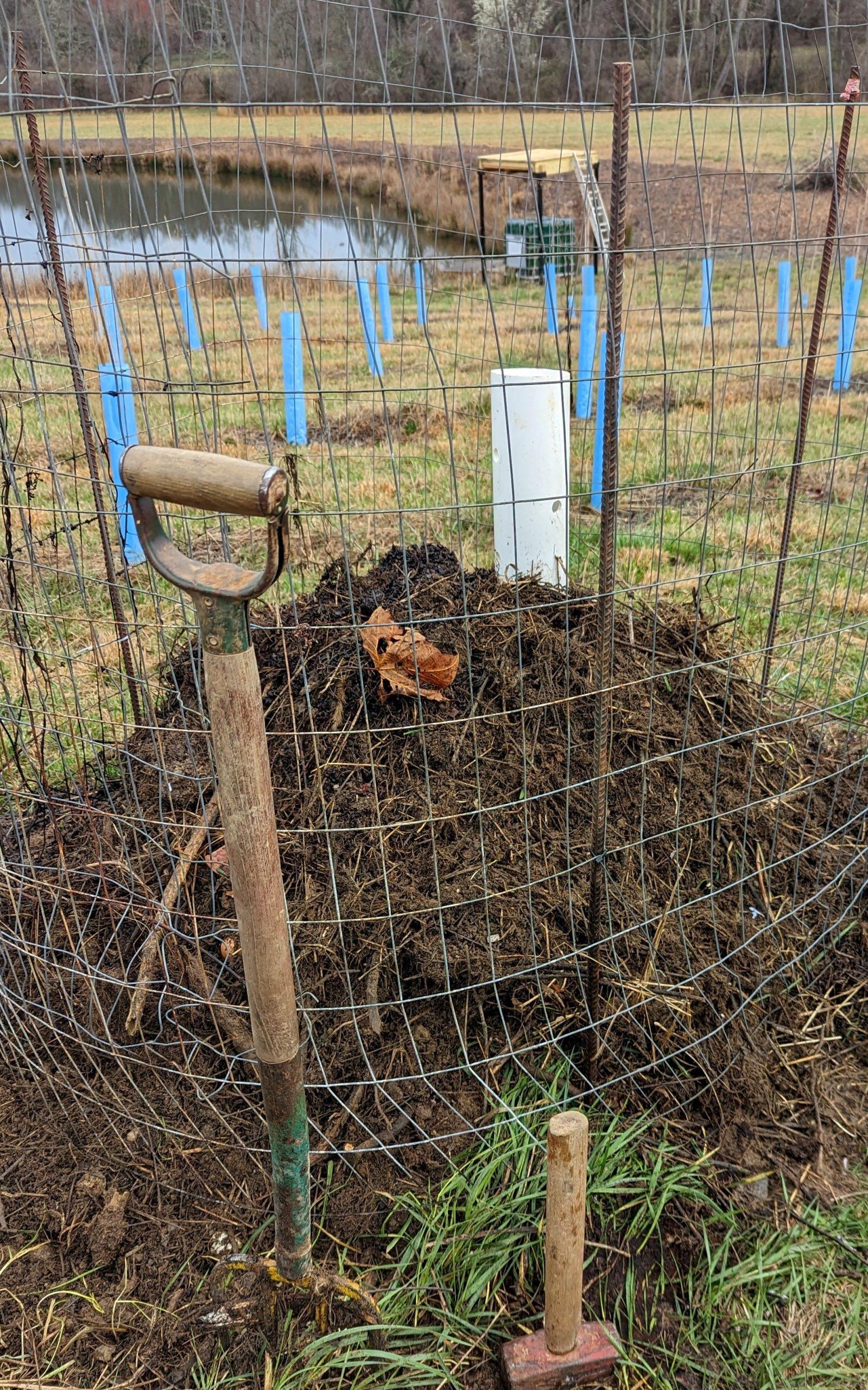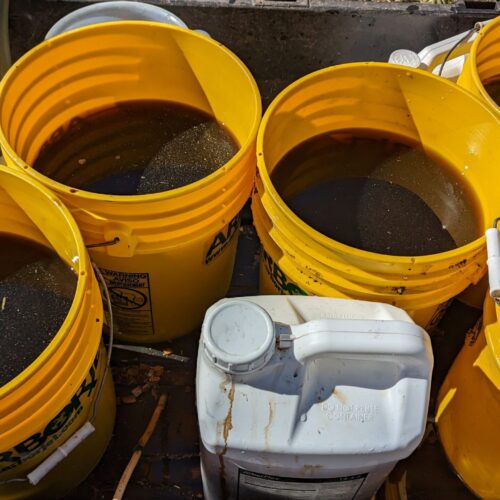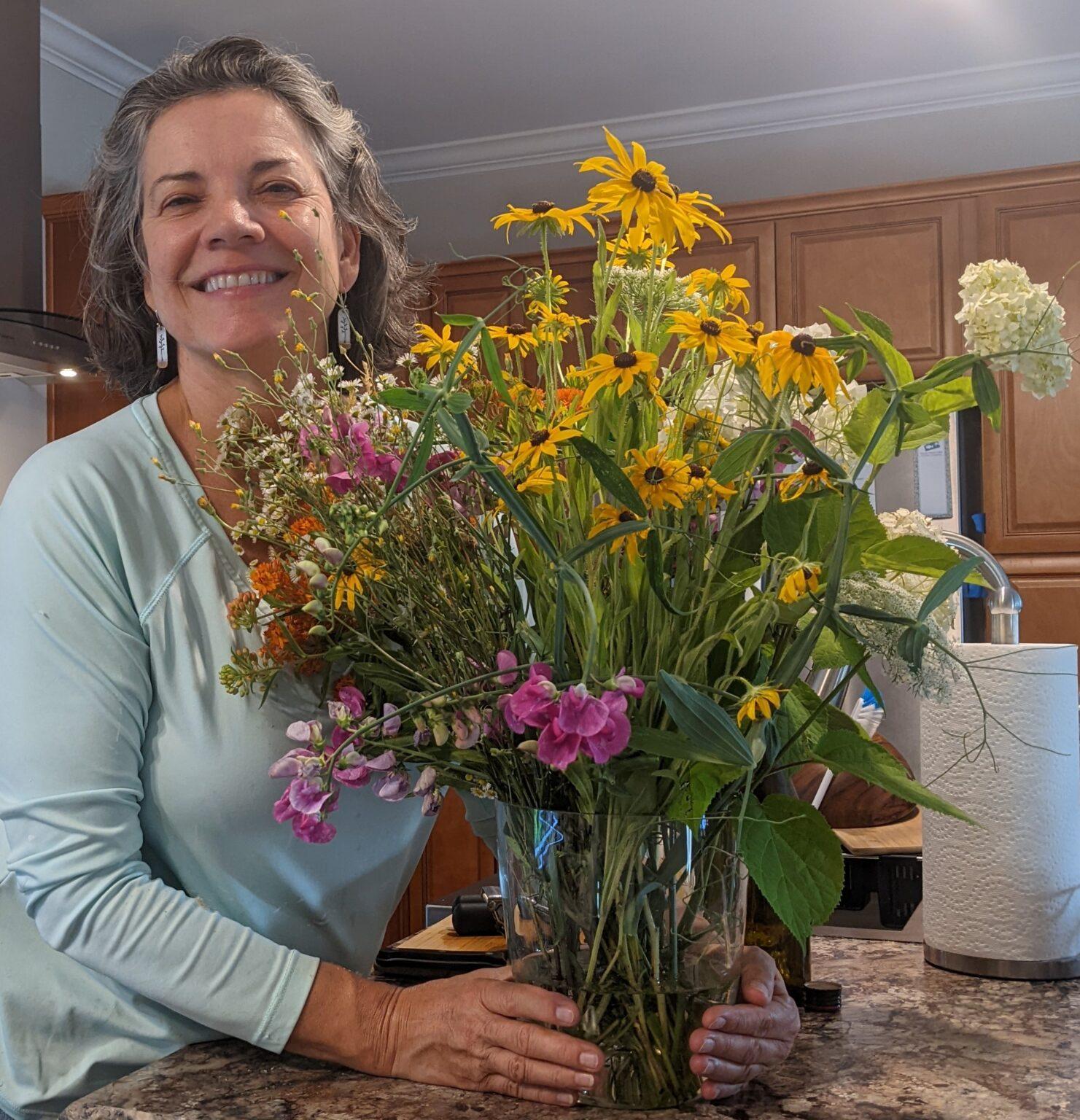This blog post is about the earth. It all starts there. I know, I know, you are thinking it is all about the sun. But that comes later. Plants start from seed or spread by rhizomes or runners. They need the earth to root. So that is where we will start. In the last blog, it got a bit technical, in this one, I will make every effort to keep it practical.
The earth has the ability to grow grasses, forbs, and woody plants. Forbs are broad-leaved herbaceous (non-woody) plants. Woody plants include shrubs, vines and trees.
Common to each of these varied groups is soil conditioning. What’s different is fertilization.
So, what is soil conditioning? Soil conditioning presumes that we are gardening or landscaping on a disturbed site, one that has seen construction (cuts, fills, compaction). Cuts take away the natural organic layer termed the O-horizon. Fills bury it. And compaction compresses the soil, squeezing out oxygen.
Construction compaction and fill
As you are well aware from past blogs, roots need air exchange. They do not do well buried or compacted. Regard soils that have seen construction as a tabula rasa. I suppose that is a good place to start our conversation.
Let’s define the tabula rasa as the parent material, that is the rock from which soil is naturally derived through the process of breaking down into finer particles. Not so bad, as the parent rock is very likely a variable mix of sand, silt and clay. Perhaps, not a bad starting point.
The question becomes what do I do with this bare, stripped mineral soil? Well, we need to condition it.
What does conditioning do? Soil conditioning is the process of adding organic matter to the soil to restore the O-horizon.

Why is the O-horizon important? The O-horizon is highly biologically active. It is alive, teaming with macro- and micro-biota! It is rich in organic matter.
This soil profile is a surface event. It is where the wild things grow – earthworms, bacteria, fungi, and roots. This surface event is 6 to 12” deep. It is where gas exchange happens and where moisture is absorbed by roots.
What elements are important components to the O-horizon? In a word, organic matter. Organic matter is derived from once living things, both plant and animal. Organic matter is rich in carbon, the basic element of living organisms. Organic matter is sticky. It works by helping to aggregate particles of soil together, in effect making the soil increasingly porous (friable).
Great! So how do I do that? In three words: compost, compost, compost. There are a number of ways to generate compost. You can sheet compost, create a compost pile or build a keyhole garden. Sheet composting is the simply the practice of tilling in raw materials in the garden row, and allowing it to compost in place. However, the more traditional compost pile is a bit more work…you need to add materials, keep it moist and well-aerated. The keyhole garden is the easiest of all to make and maintain. Construct a fenced in area three feet in diameter and four feet high. Weld wire fencing works well. Make a raised bed three feet out from the fenced-in area for your plantings. Within the fenced area, place your compostables. When it rains, the compost naturally leaches nutrients and moisture into the surrounding garden bed. Easy!

But back to conditioning a site for planting. It is a good idea to check the soil pH first. Most plants do well in soils with a pH range of 6.0 to 6.5. Soils that are either very acidic or very alkaline, are problematic for some plants. In acidic soils, add lime, in alkaline soils add sulfur. Add at least 2 inches of compost to the bed you are interested in planting. No need to incorporate it into the soil – let the earthworms do that for you. Plant directly into the prepped bed. Mulch with a 4 to 6 inch layer of woodchips.

Gardening and landscape management of soils differ. This is where we get to a crossroad. Let’s talk about trees and shrubs as they are less demanding. Their lifecycle is in years, so their nutrient demands are more extensive, rather than intensive. Condition with compost in spring, summer or fall. Fertilize in fall (preferably) or spring.
Here is an example of a soil conditioning and fertilization schedule for a new tree or shrub planting:
- Add two inches of compost
- Top dress with 4 to 6 inches of woodchips
- Fertilize the tree 2 to 4 weeks after planting
- Use a fertilizer that has a good mix of nitrogen and carbon, such as Bio MP (5-3-2 plus molasses)
- In the summer months, avoid additional fertilization, rather add liquid soil conditioners that are rich in humic substances or are derived from seaweed
- This can be made 1 to 3 times throughout the hot summer months
- In fall, fertilize with a nitrogen – carbon fertilizer




Flower and vegetable gardens (forbs) are a bit more demanding. Many are annuals that need to complete their life-cycle within a growing season. Bed prep is similar to tree and shrub planting with the following caveats:
- Add compost to the bed both spring and fall
- Top dress plantings with wheat straw rather than woodchips, though you can use chips in the paths between rows
- Fertilize once every two weeks throughout the growing season
- Use a fertilizer that has a good mix of nitrogen and carbon, such as Bio MP (5-3-2 plus molasses)
- At flowering switch to a fertilizer with a higher P&K component, such as BloomPlex (8-16-5). Both phosphorous and potassium are important to flowering and fruit set
I hope this sorts out the differences in practices and requirements for the landscape and the garden. I hope you find this information helpful!
Join us next week when we talk about protecting your crops.
~ Signing off for now, Joe



